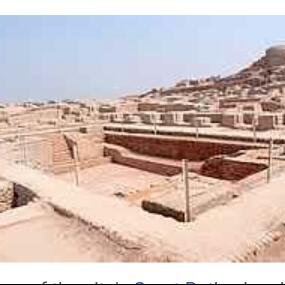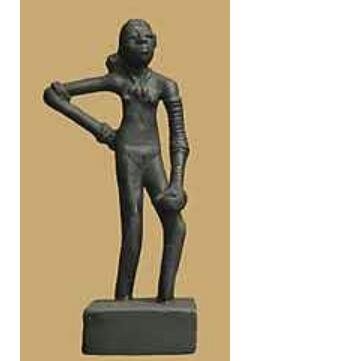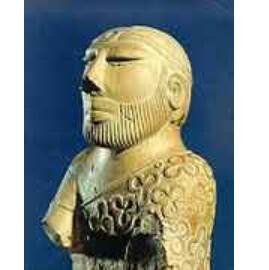
Mohenjo daro meaning mound of the dead men is an archaeological site in the province of sindh , pakistan built around 2500 BCE it was one of the largest settlement of the ancient indus valley civilization and one of the world's earliest major cities contemporaneous with the civilization of ancient egypt , Mesopotamia , Minoan cretea and norte chico .Mohenjo daro was abandoned in the 19th century BCE as the indus valley civilization declined and the site was rediscovered until the 1920s significant excavation has since been conducted at the site of the city which was desingnated a UNESCO world heritage site in 1980. The site is currently threatened by erosion and improper restoration.

Mahenjo daro has a planned layout with rectilinear buildings arranged on a grid plan. Most were built of fired and mortared brick some incorporated sundried mud brick and wooden superstructures. The covered area of Mohenjo daro is estimated at 300 hectares the sheer size of the city and its provision of public buildings and facilities suggests a high level of social organization. The city is divided into two parts the so called citadel and the lower city. The citadel and the lower city the citadel a mud brick mound around 12 metres(39 ft) high is known to have suppported public baths a large residential structure designed to house about 5000 citizens and two large assembly halls. The city had a central marketplace with a large central well. Some house presumbaly those of more prestigious inhabitants include rooms that appear to have been set aside for bathing and one building had an underground furnace possibly for heated bathing. Most houses had inner courtyards with doors that opened into side leans.some buildings had two stories.

A bronze statuette dubbed the "Dancing Girl", 10.5 centimetres (4.1 in) high and about 4,500 years old, was found in 'HR area' of Mohenjo daro in 1926. In 1973 british archaeologist Mortimer wheeler described the item as his favorite statuette.

In 1927 a seated male soapstone figure was found in a building with unsually ornamental brickwork and a wall niche. Though there is no evidence that priests or monarchs ruled Mohenjo daro archaeologists dubbed this dignified figure a "priest king". The sculpture is 17.5 centimetres (6.9) tall and shows a neatly bearded man with pierced earlobes and a fillet around his head possibly all that is left of a onceelaborate hairstyles or head dress his hair is comback. He wears an armband and a cloak with drilled single circle and double circle motifs which show traces of red. His eyes might have orginally been inlaid.
Hi! I am a robot. I just upvoted you! I found similar content that readers might be interested in:
https://everipedia.org/wiki/Mohenjo-daro/